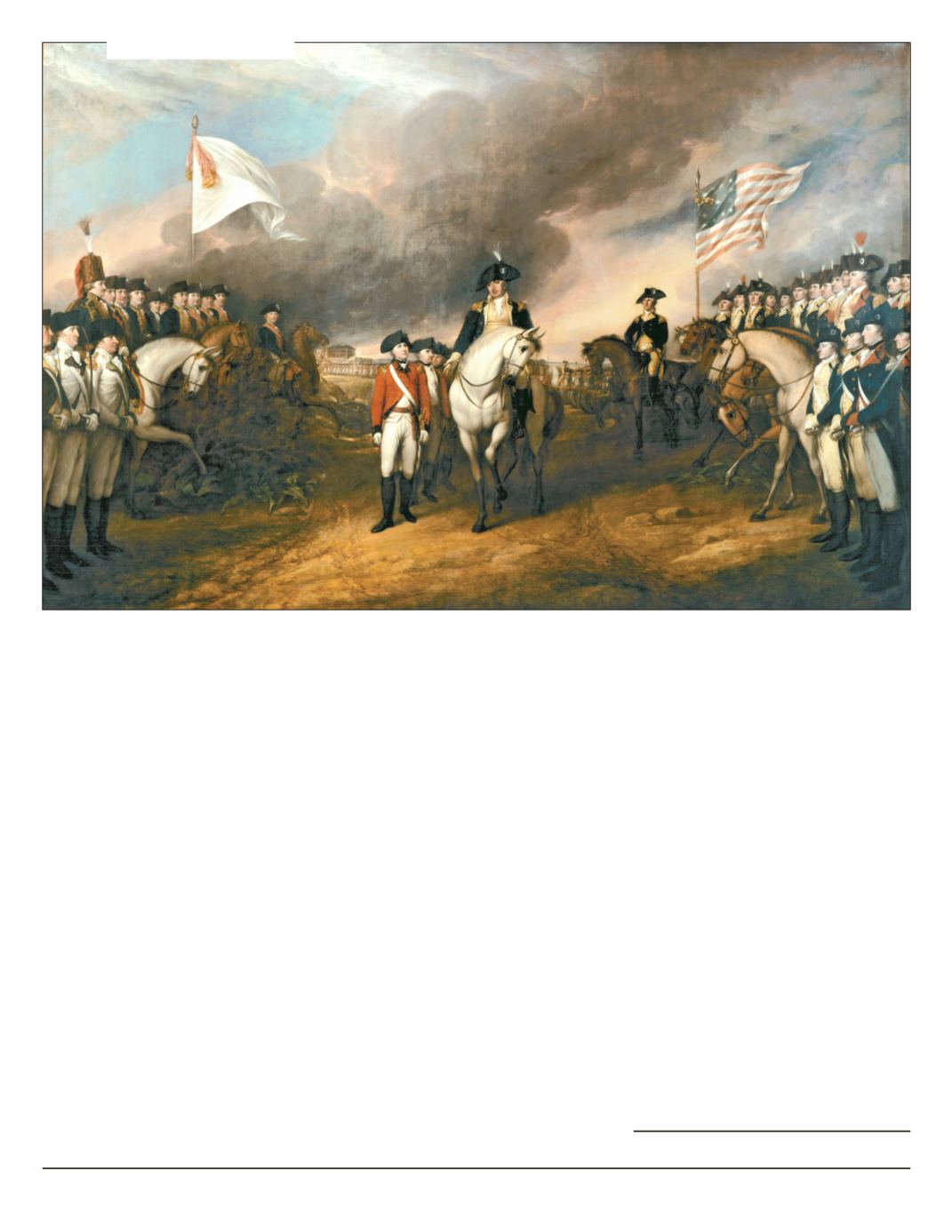

Time Lines 25
Revolutionary War burial site
uncovered during construction
ALBANY, N.Y. (AP) — Skeletal re-
mains of as many as 11 people believed
to have died during the Revolutionary
War have been uncovered at a construc-
tion site in upstate New York, a lawyer
for the couple who owns the property
told The Associated Press Tuesday.
Michael Borgos, attorney for owners
Danna and Ruben Ellsworth, said bones
from as many as 11 unmarked graves
have been found so far in an empty lot in
the Adirondack village of Lake George,
55 miles (88 kilometers) north of Albany.
Two uniform buttons found at the site
indicate that at least one of the graves
may have been that of a Pennsylvania
soldier, Borgos said.
Human bones were initially found last
Thursday as a construction crew used a
backhoe to excavate a basement for a
future apartment house. The bones in-
cluded a skull, jawbone, pelvis and leg
bones, according to David Starbuck, a
local archaeologist called in by police to
examine the remains.
Starbuck determined bones were from
a male of European descent, and at that
time he said they had been buried for
decades if not longer. When he went
back to the work site Friday with the
owners, more bones were found in piles
of dirt deposited next to the 60-foot-by-
60-foot (18-meter-by-18-meter) hole for
the foundation. Discoloring in the sandy
soil indicated evidence of at least 11 un-
marked graves where partial remains
had been exposed by the backhoe, Bor-
gos said.
Work was halted at the site, and state
archaeologists arrived Monday to gath-
er all the bones, which were taken to the
New York State Museum in Albany, the
attorney said.
Earlier, Starbuck found two uniform
buttons on some of the bones. Insignia
on the buttons indicate they came from
the uniform of a soldier in the 1st Penn-
sylvania Battalion, he said.
The battalion was part of the Conti-
nental Army that invaded Canada in
1776, a year after the war started. Dur-
ing the fighting in Quebec, smallpox
broke out among the American troops.
Sickened soldiers were sent south to
Lake George to recuperate in hospitals
whose exact locations remain a mystery.
“The majority of soldiers who went
to Lake George in the Revolution went
there as smallpox patients,” said Star-
buck, who has led archaeological digs
at several 18th century military sites in
See
WAR
page 30
Revolutionary War


















